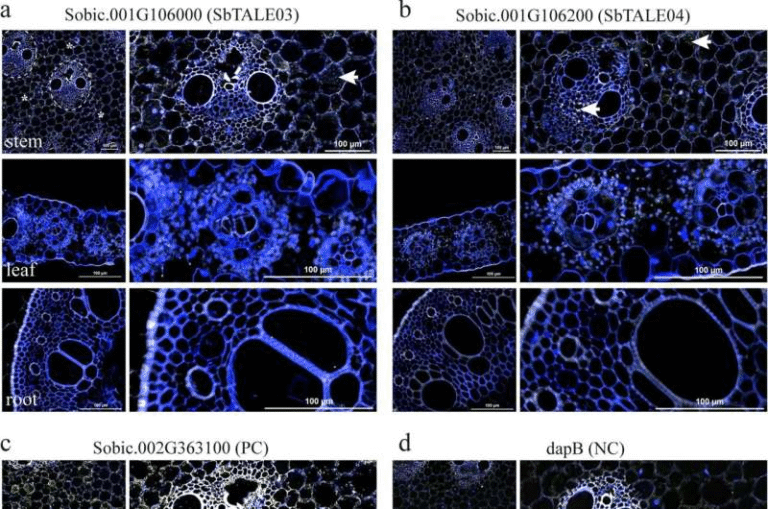Forests Recovering from Acid Rain Are Mining Rocks for Nutrients – A 60-Year Study Reveals the Hidden Cost of Recovery

In the White Mountains of New Hampshire, scientists have uncovered a fascinating but concerning story about how forests recover from decades of acid rain and logging. A new long-term study published in the Proceedings of the National Academy of Sciences (PNAS) shows that forests regrowing after heavy pollution and deforestation are mining nutrients from the rocks beneath them. While this process is helping nearby streams become less acidic, it’s also slowly draining the soil of essential minerals, potentially leaving the forest more fragile in the long run.
The Longest-Running Forest Study of Its Kind
The findings come from the Hubbard Brook Experimental Forest, a research site in New Hampshire managed by the U.S. Forest Service. This site has been a cornerstone of ecological and hydrologic research since the 1950s, collecting over six decades of data on how forests and streams respond to human and environmental pressures.
Researchers focused on three small watersheds—natural drainage areas that feed streams—each with a unique treatment history:
- One watershed was clear-cut in 1983–84 and then allowed to regrow naturally.
- Another was treated with calcium silicate (CaSiO₃) in 1999 to counteract the effects of acid rain.
- A control watershed experienced acid rain but no intervention or logging.
By comparing the chemical makeup of the streams running through these watersheds, scientists were able to track how nutrients moved through the ecosystem and how the forests were recovering from decades of acid pollution and human activity.
What the Streams Revealed
When researchers looked at the water chemistry data, they were surprised. Since 1987, the stream flowing through the clear-cut watershed had become significantly less acidic than streams in the other two watersheds—even though all three areas had been exposed to the same acid rain.
The difference came down to mineral weathering. In the logged watershed, the regrowing trees were releasing more calcium and silica into the stream. Over time, the forest that had once been cut down was exporting far more of these nutrients than even the watershed that had been artificially treated with over 100,000 pounds of calcium silicate.
This meant that the regrowing trees weren’t just recovering passively—they were actively pulling nutrients from the bedrock beneath them to rebuild what had been lost.
How Forests “Mine” Nutrients from Rocks
In areas affected by both acid rain and logging, the soil becomes severely nutrient-depleted. Trees growing back in such conditions are essentially starved of calcium, phosphorus, and other key minerals. To survive, they adapt by sending their roots deeper into the ground, teaming up with soil microbes to chemically break down rocks and extract the nutrients locked inside.
This process, known as biological weathering, is driven by root exudates—natural acids and compounds that dissolve minerals. As trees “mine” these minerals, nutrients like calcium and silicate are released into the soil and eventually washed into nearby streams. The result: stream water becomes less acidic, which is good news for aquatic ecosystems.
But there’s a catch. Every time a forest taps into its mineral reserves, nutrients are lost from the soil. Calcium and other base cations that once helped neutralize acidity are leached away, leaving the soil with a weakened buffering capacity.
The Hidden Cost: Soils Becoming More Vulnerable
The researchers warn that this underground nutrient mining has a long-term downside. The loss of base cations like calcium and magnesium makes the soil less capable of buffering any future acid inputs—whether from new pollution or natural processes.
In simple terms, while the streams may be recovering, the soils are losing their protection. That means if acid rain or other environmental stresses return, these forests could be hit even harder than before.
This delicate balance between stream recovery and soil depletion highlights how forest ecosystems can appear healthy above ground, while quietly deteriorating below the surface.
A Shift in Forest Composition
The long-term monitoring also revealed a major shift in tree species. Since the clear-cutting in the 1980s, the area has seen a steep decline in sugar maple and a rise in American beech.
Why? Sugar maples need nutrient-rich soils to thrive, and the nutrient-depleted conditions created by acid rain and logging have made it difficult for them to reestablish. American beech, on the other hand, is much better at extracting minerals from rocks—making it the natural successor in these depleted landscapes.
But that’s not necessarily a good thing. Beech trees are highly vulnerable to diseases like beech bark disease and beech leaf disease, meaning that even though they’re filling in the gaps, the new forests may be less resilient and more vulnerable to future disturbances.
This change also carries an economic and cultural impact. The loss of sugar maple trees affects maple syrup production, a defining part of New England’s heritage and local economy.
Acid Rain: A Quick Refresher
To understand the significance of this study, it helps to recall what acid rain actually is.
Acid rain forms when sulfur dioxide (SO₂) and nitrogen oxides (NOₓ) released by burning fossil fuels combine with water vapor in the atmosphere, creating acidic compounds that fall as rain or snow. In the mid-to-late 20th century, acid rain caused widespread forest damage across the northeastern U.S., leaching nutrients from soils and acidifying streams, lakes, and rivers.
The 1990 Clean Air Act Amendments in the United States drastically reduced these emissions, leading to measurable improvements in air and water quality. However, as this new study shows, the legacy of acid rain continues to shape forest ecosystems decades later.
Why This Study Matters
This 60-year dataset from Hubbard Brook provides one of the clearest long-term pictures of how acid rain and deforestation interact to shape forest recovery. It shows that:
- Forests can recover from acid rain—but not without cost.
- Nutrient mining by roots improves water quality but drains soil fertility.
- Species composition changes can make forests less resilient to future disturbances.
These insights are crucial for understanding how forests will respond to ongoing environmental stressors like climate change, disease, and potential increases in pollution.
It also underscores the importance of long-term ecological monitoring. Without decades of data collection, these subtle but critical processes would have gone unnoticed.
What This Means for Forest Management
The study suggests that simply cleaning up pollution isn’t enough. Forest management practices may need to account for:
- Soil nutrient depletion, especially calcium and magnesium loss.
- Tree species selection in reforestation efforts to maintain ecosystem resilience.
- Possible soil amendments or treatments to restore buffering capacity where it has been severely compromised.
By taking into account these below-ground processes, forest managers can make more informed decisions that ensure forests are not only recovering—but also capable of withstanding future environmental shocks.
The Bigger Picture
The idea that forests can “mine” their own bedrock for nutrients is a reminder of how complex and interconnected ecosystems are. On one hand, it shows incredible adaptability—trees and microbes literally extracting what they need from stone. On the other hand, it’s a sign of desperation, where ecosystems are drawing on deep, finite reserves that can’t easily be replaced.
Forests, it turns out, can heal themselves—but that healing can sometimes come at a hidden cost.
Research Reference: Forest recovery after deforestation is fueled by mineral weathering at the expense of ecosystem buffering capacity – Proceedings of the National Academy of Sciences (2025)





